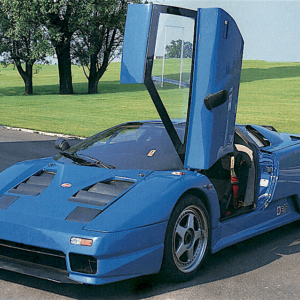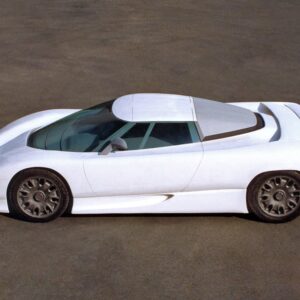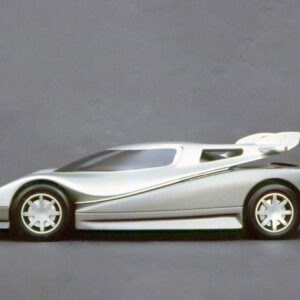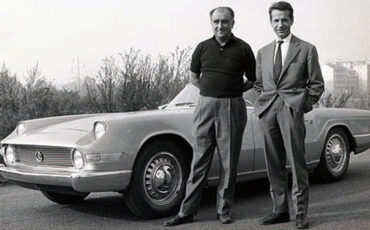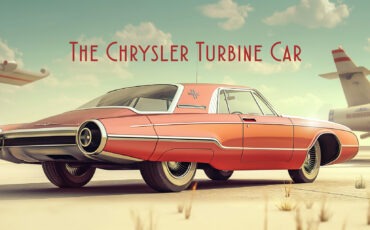
In the world of high-performance automobiles, few cars command as much intrigue as the Bugatti EB110. Brought to life by Italian entrepreneur Romano Artioli, the EB110 was a groundbreaking effort to revive the storied Bugatti name. Combining avant-garde engineering, meticulous design, and theatrical presentation, it was a car that set new benchmarks for what a supercar could achieve—both on paper and in practice.
Who Is Romano Artioli?
Romano Artioli is a visionary entrepreneur and car enthusiast who played a pivotal role in the revival of the Bugatti brand. Born in the Province of Mantua, he grew up in Bolzano, where he established himself as a key figure in the luxury and performance automotive world. In the 1980s, he managed the largest Ferrari dealership in the world, expanding his reach into northern and southern Germany.
Artioli’s expertise extended beyond Italian exotics. He entered the business of importing Japanese cars through his company Autexpò, which in 1982 became the first official importer of Suzuki vehicles in Italy. This venture bolstered his business acumen and financial resources, laying the groundwork for larger ambitions.

A passionate admirer of Bugatti, Artioli joined forces with Ferruccio Lamborghini and Paolo Stanzani to resurrect the legendary French marque. Leveraging their credibility and Stanzani’s industrial expertise, Artioli negotiated with the French government, which controlled the Bugatti brand at the time. In 1987, he successfully acquired the rights to Bugatti, forming the Bugatti International holding company, with Jan-Krister Breitfeld as president.
The same year, Artioli and Stanzani co-founded Bugatti Automobili S.p.A., with Stanzani acting as sole administrator and technical director. Initially, Artioli took a backseat, not assuming a direct managerial role until 1990, when he became president of the company. However, deep-seated disagreements over business strategy led to Stanzani’s departure just as the Bugatti EB110 prototypes were nearing completion.
Romano Artioli’s Vision for Bugatti
The Bugatti marque, dormant since the mid-20th century, was revived in 1987 when Artioli acquired the rights. For Artioli, Bugatti was more than a brand; it was an embodiment of perfection and artistry. His vision was to resurrect the marque in a way that honored its legacy while propelling it to the forefront of automotive innovation.

To that end, he established Bugatti Automobili S.p.A. in Campogalliano, Italy, a high-tech facility designed to reflect Bugatti’s meticulous ethos. Even the smallest details of the factory, from its architecture to its branding, were crafted to exude sophistication. Artioli’s pursuit of excellence extended to every facet of the operation, with no expense spared to ensure that the car would become a technological and artistic marvel.
The Bugatti EB110: Designed for Elegance and Performance
The design of the EB110 emerged after several high-profile proposals were reviewed. While initial sketches by Marcello Gandini offered an angular and aggressive aesthetic, Artioli found them inconsistent with Bugatti’s legacy of elegance. Additional proposals were considered, including contributions from Italdesign Giugiaro, Bertone, and Paolo Martin.
Ultimately, the task of finalizing the car’s design fell to Gianpaolo Benedini, who also oversaw the construction of the Campogalliano factory. Benedini reworked Gandini’s initial drafts, softening the harsh lines and introducing a more aerodynamic, timeless shape. The final design balanced modernity with subtle nods to Bugatti’s heritage, including a minimalist interpretation of the iconic horseshoe grille.
Artioli’s design philosophy for the EB110 drew inspiration from the weight-saving principles famously championed by Carrozzeria Touring, applying advanced materials and innovative techniques to achieve unparalleled efficiency and performance.
A Technical Masterpiece
At the heart of the EB110 was a 3.5-liter quad-turbocharged V12 engine, a marvel of engineering that delivered both raw power and remarkable sophistication. The engine, featuring five valves per cylinder (three intake, two exhaust), produced 553 horsepower in the GT model and 603 horsepower in the more aggressive SS variant.
This technological showcase included 12 individual throttle bodies, ensuring razor-sharp response. Engineered to operate at a stratospheric 8,600 RPM redline, the powertrain underscored Bugatti’s commitment to pushing the boundaries of what was mechanically possible.

The engine’s advanced systems were paired with a six-speed manual gearbox, allowing precise control over the car’s immense power. To harness this energy, the EB110 employed a sophisticated all-wheel-drive system that delivered 27% of the torque to the front wheels and 73% to the rear. This rear-biased setup provided excellent traction while maintaining the dynamic feel of a rear-wheel-drive sports car.
The EB110’s chassis was equally advanced. Its carbon-fiber monocoque, developed in collaboration with aerospace specialists, was one of the first of its kind in a production car. This construction provided exceptional rigidity while keeping weight to a minimum. The suspension system, with double wishbones at all four corners, ensured precise handling and a planted feel at high speeds.
The car’s aerodynamics were optimized through extensive wind tunnel testing, with active features like a deployable rear spoiler that adjusted based on speed and braking inputs. All of this culminated in a car capable of 0 to 60 mph in just 3.2 seconds and a top speed of 218 mph, making it one of the fastest cars of its era.
A Spectacular Debut
The launch of the EB110 on September 15, 1991; Ettore Bugatti’s 110th birthday; was a spectacle befitting its ambitious design. The unveiling began in Paris, the birthplace of the original Bugatti marque, where a carefully choreographed celebration honored the brand’s heritage. Over 70 vintage Bugatti cars were displayed in a horseshoe formation, evoking both history and exclusivity. Thousands of guests, including dignitaries, journalists, and celebrities, were treated to an elaborate presentation that emphasized Bugatti’s past and future.

After the Parisian festivities, the EB110 was transported to Molsheim, France, where Ettore Bugatti had established his original factory. There, the car was revealed to the public, symbolizing the brand’s return to its roots.
Artioli spared no effort in making the event memorable. From champagne receptions to grand dinners, the entire celebration reflected the opulence and ambition that defined the EB110 project.
Challenges and Legacy
Despite its technological brilliance, the EB110 faced significant challenges. The global economic recession of the early 1990s reduced demand for ultra-expensive supercars, and Bugatti’s ambitious production targets proved unattainable. Financial pressures mounted, exacerbated by Artioli’s overextension into ventures like the acquisition of Lotus.
Rumors of industrial sabotage and pressure from rival manufacturers added to the drama. Bugatti Automobili declared bankruptcy in 1995, having produced only 139 units of the EB110. The company’s assets, including the Campogalliano factory, were eventually sold.

Yet, the EB110’s legacy endures. It set the stage for modern Bugatti hypercars like the Veyron and Chiron, which adopted its pioneering use of carbon fiber, all-wheel-drive systems, and quad-turbocharged engines. The EB110 is now a highly coveted collector’s car, celebrated for its engineering prowess and historical significance.
Why the Bugatti EB110 Failed
The failure of the Bugatti EB110 was a tragic convergence of bad timing, overambition, and industrial intrigue. Romano Artioli’s vision for Bugatti included not just reviving the brand but also acquiring Lotus, creating a global network of luxury dealerships. While Lotus found modest success, Bugatti faced a rough start, worsened by external and internal challenges.
The EB110 launched in 1991, during a global recession that decimated the exotic car market. Bugatti aimed to sell 150 cars annually, but only 115 were produced over three years. Compounding this was the Black Monday crash in 1987, just as Bugatti Automobili was established, creating economic turbulence that hampered the brand’s revival.

Behind the scenes, Artioli claimed sabotage: suppliers allegedly cut off deliveries under pressure from rivals, and even employees were rumored to have tampered with production. Adding to the turmoil, Suzuki terminated its distributorship deal with Artioli, cutting a critical revenue stream.
Ambitious projects, like the state-of-the-art factory in Campogalliano, drained resources, while Bugatti’s inability to meet supplier payments strained production. Despite a car that dazzled in engineering and design, the company’s collapse was a tale of overreach and misfortune. The EB110 remains a brilliant but brief chapter in Bugatti’s storied history.
A Bold Dream, A Lasting Impact
The Bugatti EB110 was a supercar born of audacity and innovation. Though its production run was short-lived, the EB110 remains a symbol of what is possible when visionaries push the limits of technology and design. Its story, marked by triumph and turbulence, encapsulates the essence of the Bugatti spirit: a relentless pursuit of excellence in the face of overwhelming odds.

